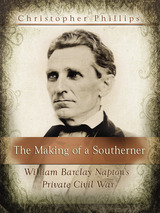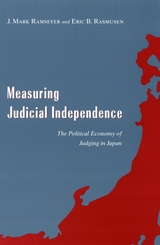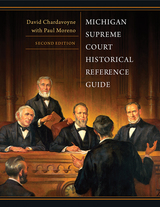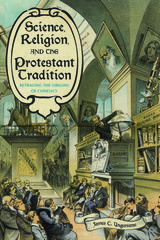105 books about Judges and 5
start with M
105 books about Judges and 5
105 books about Judges
5 start with M start with M
5 start with M start with M

The Making of a Southerner
William Barclay Napton's Private Civil War
Christopher Phillips
University of Missouri Press, 2008
Christopher Phillips has brought to life a man, a story, and a voice lost in the din of competing post–Civil War narratives that each claim a timeless divide between North and South. William Barclay Napton (1808–1883) was an editor, lawyer, and state supreme court justice who lived in Missouri during the tumultuous American nineteenth century. He was a keen observer of the nation’s sectional politics just as he was a participant in those of his border state, the most divided of any in the nation, in the decades surrounding the Civil War. This book tells the story of one man’s civil war, lived and waged within the broader conflict, and the long shadows both cast.
But Napton’s story moves beyond the Civil War just as it transcends the formal political realm. His is a fascinating tale of identity politics and their shifting currents, by which the highly educated former New Jerseyite became the owner or trustee of nearly fifty slaves and one of the most committed and thoughtful of the nation’s proslavery ideologues. That a “northerner” could make such a life transition in the Border West suggests more than the powerful nature of slavery in antebellum American society. Napton’s story offers provocative insights into the process of southernization, one driven more by sectional ideology and politics than by elements of a distinctive southern culture.
Although Napton’s tragic Civil War experience was a watershed in his southern evolution, that evolution was completed only after he had constructed a politicized memory of the bitter conflict, one that was suffered nowhere worse than in Missouri. This war-driven transformation ultimately defined him and his family, just as it would his border state and region for decades to come. By suffering for the South, losing family and property in his defense of its ideals and principles, he claimed by right what he could not by birth. Napton became a southerner by choice.
Drawn from incomparable personal journals kept for more than fifty years and from voluminous professional and family correspondence, Napton’s life story offers a thoughtful and important perspective on the key issues and events that turned this northerner first into an avowed proslavery ideologue and then into a full southerner. As a prominent jurist who sat on Missouri’s high bench for more than a quarter century, he used his politicized position to give birth to the New South in the Old West. Students, teachers, and general readers of southern history, western history, and Civil War history will find this book of particular interest.
[more]

Measuring Judicial Independence
The Political Economy of Judging in Japan
J. Mark Ramseyer and Eric B. Rasmusen
University of Chicago Press, 2003
The role of the U.S. Supreme Court in the aftermath of the 2000 presidential election raised questions in the minds of many Americans about the relationships between judges and political influence; the following years saw equally heated debates over the appropriate role of political ideology in selecting federal judges. Legal scholars have always debated these questions—asking, in effect, how much judicial systems operate on merit and principle and how much they are shaped by politics.
The Japanese Constitution, like many others, requires that all judges be "independent in the exercise of their conscience and bound only by this Constitution and its laws." Consistent with this requirement, Japanese courts have long enjoyed a reputation for vigilant independence—an idea challenged only occasionally, and most often anecdotally. But in this book, J. Mark Ramseyer and Eric B. Rasmusen use the latest statistical techniques to examine whether that reputation always holds up to scrutiny—whether, and to what extent, the careers of lower court judges can be manipulated to political advantage.
On the basis of careful econometric analysis of career data for hundreds of judges, Ramseyer and Rasmusen find that Japanese politics do influence judicial careers, discreetly and indirectly: judges who decide politically charged cases in ways favored by the ruling party enjoy better careers after their decisions than might otherwise be expected, while dissenting judges are more likely to find their careers hampered by assignments to less desirable positions.
Ramseyer and Rasmusen's sophisticated yet accessible analysis has much to offer anyone interested in either judicial independence or the application of econometric techniques in the social sciences.
The Japanese Constitution, like many others, requires that all judges be "independent in the exercise of their conscience and bound only by this Constitution and its laws." Consistent with this requirement, Japanese courts have long enjoyed a reputation for vigilant independence—an idea challenged only occasionally, and most often anecdotally. But in this book, J. Mark Ramseyer and Eric B. Rasmusen use the latest statistical techniques to examine whether that reputation always holds up to scrutiny—whether, and to what extent, the careers of lower court judges can be manipulated to political advantage.
On the basis of careful econometric analysis of career data for hundreds of judges, Ramseyer and Rasmusen find that Japanese politics do influence judicial careers, discreetly and indirectly: judges who decide politically charged cases in ways favored by the ruling party enjoy better careers after their decisions than might otherwise be expected, while dissenting judges are more likely to find their careers hampered by assignments to less desirable positions.
Ramseyer and Rasmusen's sophisticated yet accessible analysis has much to offer anyone interested in either judicial independence or the application of econometric techniques in the social sciences.
[more]

Michigan Supreme Court Historical Reference Guide, 2nd Edition
David Chardavoyne
Michigan State University Press, 2015
This second edition of the Michigan Supreme Court Historical Reference Guide contains the biographies of Michigan Supreme Court’s justices from its territorial beginnings in 1803 through 2015. It includes summaries of twenty top cases of the Michigan Supreme Court, which contextualize the eras in which the justices were on the bench, giving a greater depth of understanding to both who the justices were and the historical significance of the cases they decided. A rich reference for historians and attorneys, this book also includes valuable charts detailing election dates and candidates as well as court compositions (who served with whom); lists of chief justices and the ten longest—and shortest—serving justices with dates of service; and a history of the structural evolution of the Michigan Supreme Court.
[more]

The Monkey and The Tiger
Judge Dee Mysteries
Robert van Gulik
University of Chicago Press, 1965
The Monkey and The Tiger includes two detective stories, "The Morning of the Monkey" and "The Night of the Tiger." In the first, a gibbon drops an emerald in the open gallery of Dee's official residence, leading the judge to discover a strangely mutilated body in the woods—and how it got there. In the second, Dee is traveling to the imperial capital to assume a new position when he is separated from his escort by a flood. Marooned in a large country house surrounded by fierce bandits, Dee confronts an apparition that helps him solve a mystery.
[more]

Murder in Canton
A Judge Dee Mystery
Robert van Gulik
University of Chicago Press, 1966
Brought back into print in the 1990s to wide acclaim, re-designed new editions of Robert van Gulik's Judge Dee Mysteries are now available.
Written by a Dutch diplomat and scholar during the 1950s and 1960s, these lively and historically accurate mysteries have entertained a devoted following for decades. Set during the T'ang dynasty, they feature Judge Dee, a brilliant and cultured Confucian magistrate disdainful of personal luxury and corruption, who cleverly selects allies to help him navigate the royal courts, politics, and ethnic tensions in imperial China. Robert van Gulik modeled Judge Dee on a magistrate of that name who lived in the seventh century, and he drew on stories and literary conventions of Chinese mystery writing dating back to the Sung dynasty to construct his ingenious plots.
Murder in Canton takes place in the year 680, as Judge Dee, recently promoted to lord chief justice, is sent incognito to Canton to investigate the disappearance of a court censor. With the help of his trusted lieutenants Chiao Tai and Tao Gan, and that of a clever blind girl who collects crickets, Dee solves a complex puzzle of political intrigue and murder through the three separate subplots "the vanished censor," "the Smaragdine dancer," and "the Golden Bell."
An expert on the art and erotica as well as the literature, religion, and politics of China, van Gulik also provides charming illustrations to accompany his engaging and entertaining mysteries.
Written by a Dutch diplomat and scholar during the 1950s and 1960s, these lively and historically accurate mysteries have entertained a devoted following for decades. Set during the T'ang dynasty, they feature Judge Dee, a brilliant and cultured Confucian magistrate disdainful of personal luxury and corruption, who cleverly selects allies to help him navigate the royal courts, politics, and ethnic tensions in imperial China. Robert van Gulik modeled Judge Dee on a magistrate of that name who lived in the seventh century, and he drew on stories and literary conventions of Chinese mystery writing dating back to the Sung dynasty to construct his ingenious plots.
Murder in Canton takes place in the year 680, as Judge Dee, recently promoted to lord chief justice, is sent incognito to Canton to investigate the disappearance of a court censor. With the help of his trusted lieutenants Chiao Tai and Tao Gan, and that of a clever blind girl who collects crickets, Dee solves a complex puzzle of political intrigue and murder through the three separate subplots "the vanished censor," "the Smaragdine dancer," and "the Golden Bell."
An expert on the art and erotica as well as the literature, religion, and politics of China, van Gulik also provides charming illustrations to accompany his engaging and entertaining mysteries.
[more]
READERS
Browse our collection.
PUBLISHERS
See BiblioVault's publisher services.
STUDENT SERVICES
Files for college accessibility offices.
UChicago Accessibility Resources
home | accessibility | search | about | contact us
BiblioVault ® 2001 - 2024
The University of Chicago Press









